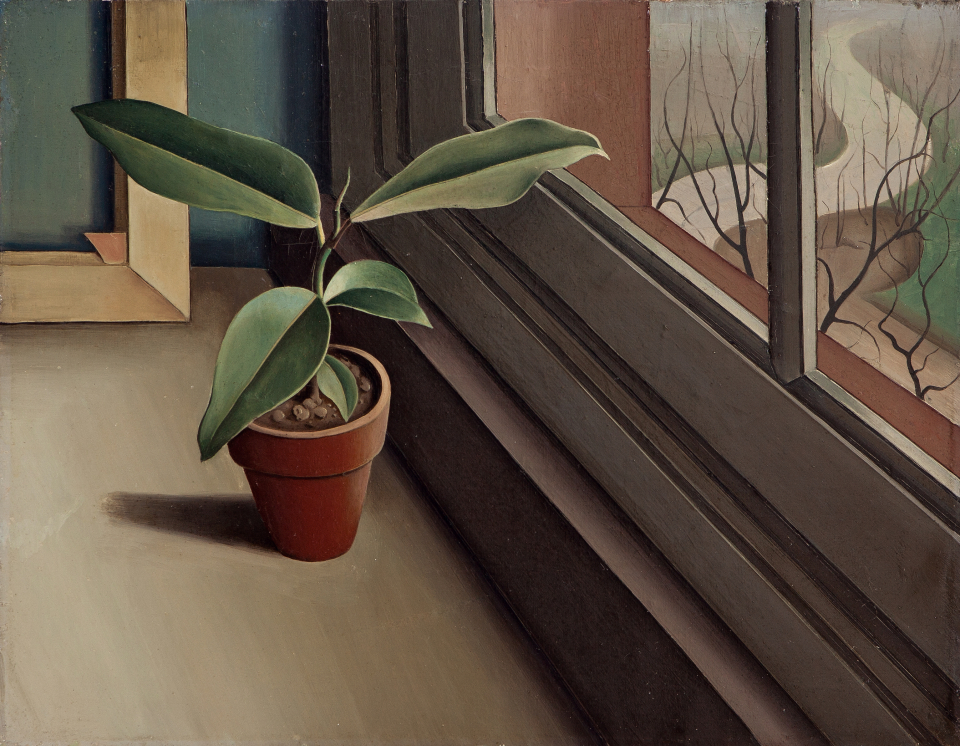nicht ausgestellt
Einstieg
Tristesse und Wirklichkeit? Der in Mannheim geborene Xaver Fuhr stellt mit dem Gummibaum eine eher unscheinbare Pflanze in das Zentrum seines Bildes. Nichts erinnert an die üppige Farbenpracht impressionistischer Stillleben oder an die wilden Formexperimente ihrer expressionistischen Gegenstücke. Fuhr zeigt uns vielmehr eine von Überschwang und pulsierender Schönheit bereinigte Welt. Nüchtern präsentiert er einen Ausschnitt alltäglichen Lebens, in dem sich menschliche Spuren bis auf wenige Überbleibsel (den Keilrahmen im Hintergrund) verloren haben.
Fast scheint es, als versuche Fuhr die Gewöhnlichkeit einer vollkommen gewöhnlichen Welt mit Nachdruck zum Ausdruck zu bringen. Doch sein Bild greift auch einen klassischen Inhalt der Bildgattung Stillleben auf, den symbolischen Verweis auf Leben und Tod: Die lebendige, immergrüne Zimmerpflanze ist das Gegenstück zum kahlen Baum vor dem Fenster. Fuhr inszeniert diese kühle Atmosphäre mit einer realistischen Malweise und stellt, wie andere Künstler der Neuen Sachlichkeit, gerade das Unscheinbare in den Mittelpunkt.
Einstieg
Tristesse and reality? With his rubber plant, Xaver Fuhr, born in Mannheim, places a relatively nondescript plant at the center of his picture. This is a far cry from the rich colors of the Impressionist still lifes or the wild formal experiments of their Expressionist counterparts. Instead, Fuhr shows us a world purged of passion and pulsing beauty, soberly presenting us with an excerpt from daily life, which, apart from a few remnants (the canvas stretcher frame in the background), is devoid of human traces.
It almost appears as if Fuhr is attempting to emphasize the ordinariness of a completely ordinary world. However, his picture also encapsulates a classic aspect of the still life genre, the symbolic reference to life and death, with the vigorous, evergreen house plant forming the counterpart to the bare tree in front of the window. Fuhr stages this cool atmosphere through a realistic manner of painting, and by putting—as other New Objectivist painters did—the commonplace at the center of the work.
Kunsthalle Mannheim

![Rheinkahn Signatur: ohne: Beschriftung verso: in Bleistift handschriftlich o.li: "Xaver Fuhr // Rhein Kahn // Lithogr.[?] Städt. Kunsthalle // Mannheim"; u.li.: "40"](/sites/default/files/styles/700_breit/public/digitalisate/G2872_MOS_20018.jpg?itok=HqJgmGF1)


